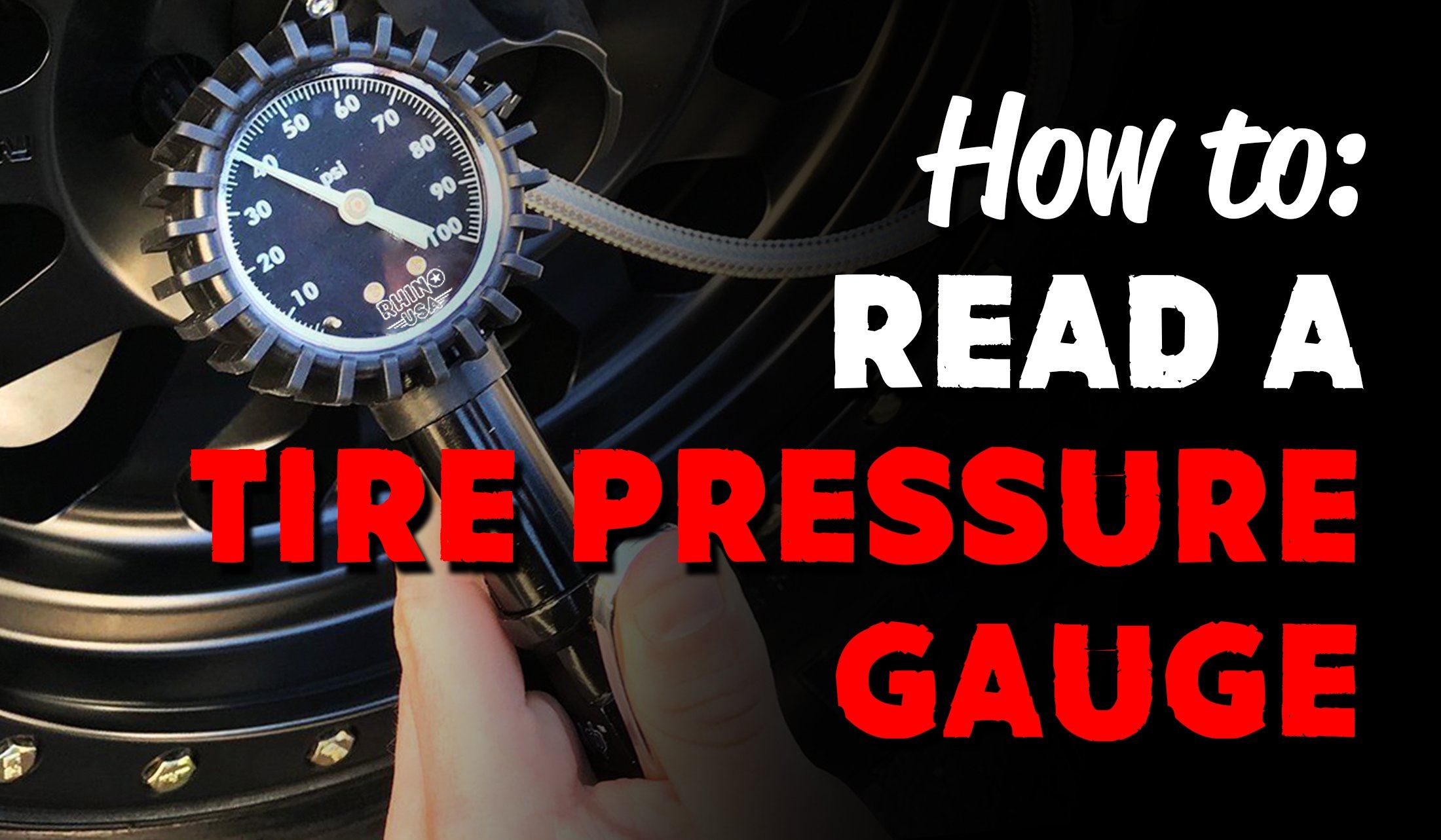
How to Read a Tire Pressure Gauge
Checking your tire pressure is a key component to helping maintain the longevity of your tire and its performance. To check your tire pressure, which is essentially the amount of air in your tire, you must use a tire pressure gauge. When using a tire pressure gauge, you will be getting a number which is your PSI.
PSI, which is pounds per square inch, is the unit that represents tire pressure. The optimal PSI for your tire depends on your car, so it is best to check with your vehicle manufacturer for your PSI. If you are looking for a tire pressure gauge for a larger vehicle, such as an RV, you may need a different tire pressure gauge that measures up to a higher PSI.

There are three different types of tire pressure gauges, so choosing the one that is the best fit for you is the key to being able to measure your tire pressure correctly. The three different types of tire pressure gauges are: the stick gauge, the dial gauge, and the digital gauge.
The stick gauge tends to be the most inexpensive gauge out of the three.
However, for what you may not be paying for in price, you may be paying for in time. The stick gauge is the most difficult to read and can be less accurate than the other two options. But, if you get used to using a stick gauge, you may find the trickiness of reading the output to not be so bad. Aside from the potential difficulty of reading the output on a stick gauge, it is a good gauge to get if you are looking for something small and inexpensive that does not require batteries.
To read a stick gauge, open the valve on your tire and press the end of the stick gauge that is open onto the valve. Once the gauge finishes moving, you should be able to get your PSI.
The digital gauge is typically more expensive than the stick gauge, but they generally give very accurate readings, and can even give you readings in the dark. Something to consider with digital gauges though is that they need batteries to function, so if you tend to be someone who forgets to replace the batteries in things, this may not be a great option for you. Although the batteries should last quite a while in a digital gauge, having a gauge with dead batteries when you need it would not be ideal.

To read a digital gauge, open the valve on your tire and press the end of the digital gauge on to your open tire valve. The digital display should give you an accurate read on your PSI.
Last, but not least, is the dial gauge, which is surprisingly typically the most expensive out of the three options. The dial gauge is generally easier to read than the stick gauge and has a better accuracy. Along with this, it also does not need batteries to operate, which may make it more appealing than a digital gauge. However, one downside of a dial gauge is that you need two hands to use it, which may make it inconvenient. Also, it is not easily readable in the dark.
To read a dial gauge, open the valve on your tire and press the valve at the end of the hose to the open tire valve. Once the hand on the gauge has stopped moving, you should have your PSI.
If you seem to be having trouble reading your tire pressure with your tire pressure gauge of choice, you may be moving it too much or placing it onto the valve incorrectly. Either of these things can lead to an inaccurate reading of your PSI.
The best time to check your car’s tire pressure for an accurate reading is if it has not been driven for at least three hours. It is also best to repeat this at least once a month.
Featured Product: Rhino USA 75 PSI Tire Pressure Gauge
If you are still having trouble deciding which tire pressure gauge is the right choice for you, one we recommend is the 75 PSI Tire Pressure Gauge. This gauge is a dial gauge, so it is extremely accurate, does not require batteries, and even glows in the dark for easy reading in the dark.
The Rhino Tire Pressure gauge measures up to 75 PSI, which gives you a wider range of uses, and can fit in your glove box. Along with all of this, it also comes with a lifetime warranty, which can make you feel a little better about the price because even though it may be more expensive than a stick and digital gauge, you will receive a quality product that is backed by a no questions asked lifetime warranty!
 Tire Pressure Gauge FAQ's
Tire Pressure Gauge FAQ's
How often should I check my tire pressure?
It's recommended to check your tire pressure at least once a month and before long trips. Seasonal temperature changes can also affect tire pressure, so it's a good idea to monitor it regularly to maintain optimal levels. Ensuring optimal tire pressure on your vehicle can also help with improving fuel efficiency.
Can I Use a Digital Tire Pressure Gauge Instead of an Analog
Yes, digital tire pressure gauges are accurate and convenient tools for measuring tire pressure. They can be used interchangeably with analog gauges, but it's essential to select a reliable digital gauge and calibrate it periodically to maintain accuracy. Both types of gauges are accurate enough to measure tire pressure, and digital gauges are easier to use.
- Choosing a selection results in a full page refresh.








